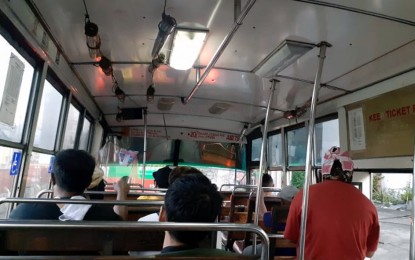
(File photo)
MANILA – In the first half of the 1970s, when then newly-built Manila North Diversion Road (MNDR) from Balintawak, Quezon City to Tabang, Guiguinto, Bulacan was opened to passenger buses, travelers bound for Metro Manila from anywhere in Northern and Central Luzon used to be asked by conductors upon reaching the end of the limited access route near Epifanio Delos Santos Avenue (Edsa) in Balintawak: "May baba ba sa Balintawak?" (Is anyone getting off in Balintawak?)
The same question was being asked from passengers by drivers of public utility jeepneys (PUJs) plying the Novaliches-Blumentritt (Manila) route through Quirino Highway-Balintawak-A. Bonifacio Avenue and vice versa.
Conductors of buses from Sapang Palay, San Jose del Monte, Bulacan to Sta. Cruz, Manila also did the same.
At that time Commonwealth Avenue in Quezon City was not yet extended until Quirino Highway in Novaliches. Mindanao Avenue, on the other hand, was existing only until Project 6 and Barangay Bagong Pag-asa, Quezon City.
As a result, all vehicles coming from Quezon City, Manila and Caloocan City bound for the eastern towns of Bulacan, like San Jose del Monte (now a city), Norzagaray, and Sta. Maria, had to move at turtle's pace along the narrow Quirino Highway from Balintawak to Bulacan.
As a destination place, Camachile does not appear on the map of Quezon City, unlike the historical places Balintawak and Barangay Unang Sigaw, considered as the site where the first "Cry" of the 1896 Revolution against Spanish rule in the Philippines was raised by the Katipuneros led by Andres Bonifacio.
In the early months of the 1980s, there was a change in the way bus conductors and PUJ drivers were asking their passengers. They phrased the query this way: "May bababa ba sa Camachile?" (Is somebody getting off at Camachile?)
That change in name from Balintawak to Camachile was the aftermath of a strong typhoon sometime in 1980 which uprooted a fruit-bearing camachile tree situated on a government-owned lot near the intersection of Quirino Highway and the MNDR. The tree happened to fall on a portion of the MNDR, with its topmost branches blocking a lane of the highway.
Several street children in the area soon began picking the ripening fruits of the fallen tree, while shouting "camachile, bili na kayo" (camachile fruits for sale).
Not long afterwards, even after the men of the former Ministry of Public Works and Highways had removed the uprooted tree, jeepney drivers from Novaliches and Blumentritt which converged at Balintawak began using the word "camachile" as a loading and unloading destination for their passengers.
This situation prevails until today, and many PUJ drivers even display signboards with the word "camachile."
The present North Luzon Expressway (NLEX) used to be called Manila North Diversion Road when its initial 24-kilometer segment from Balintawak to Guiguinto, Bulacan was constructed in the mid-1960s by the Construction and Development Corporation of the Philippines (CDCP), precursor of the Philippine National Construction Corporation or PNCC, according to the Wikipedia.
In recent years, the PNCC became the Manila North Tollways Corporation before being renamed the North Luzon Expressway (NLEX) Corporation.
The NLEX runs parallel to the MacArthur Highway, formerly the Manila North Road, which ends at the Bonifacio Monument in Grace Park, Caloocan City.
From the Balintawak Cloverleaf Interchange, the NLEX connects with the Skyway, an elevated toll road that passes through Quezon City and Manila before linking with the South Luzon Expressway which begins from Makati City.
In the North, the NLEX now ends at Sta. Ines interchange in Pampanga, where it connects with the Subic-Clark-Tarlac Expressway or SCTEX. (PNA)
